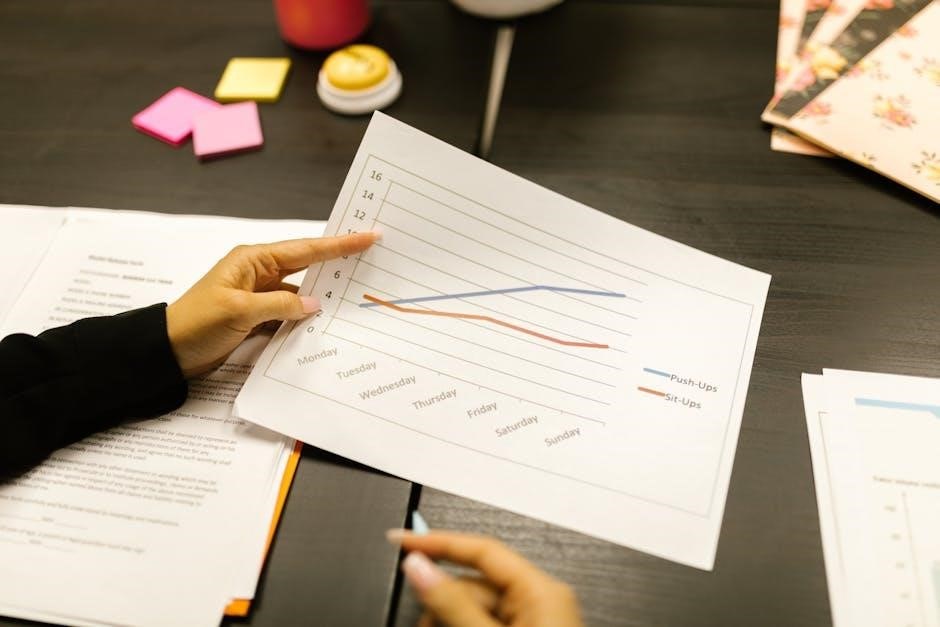Organs are specialized structures composed of different tissues working together to perform specific functions vital for survival. These organs form organ systems, which carry out essential processes within the human body, ensuring its proper functioning.
What is an Organ?
An organ is a distinct, complex structure within the body, comprised of various tissues that collaborate to execute a specific physiological function. These tissues, such as muscle, connective, epithelial, and nervous tissue, unite to create a functional unit. Organs are not just random collections of cells; they are highly organized entities that perform critical roles in maintaining life. Each organ is designed to carry out a particular task, whether it is pumping blood like the heart, filtering waste like the kidneys, or processing information like the brain. Organs are essential for the overall operation of the body and are categorized into various organ systems based on shared functions, such as the digestive system or the respiratory system. The human body contains approximately 74 to 79 significant organs depending on the counting method.

The Human Body’s Organization
The human body is organized in a hierarchical manner, starting from cells, then tissues, followed by organs, and culminating in organ systems, each playing a vital role in bodily functions.
Cells, Tissues, Organs, and Systems
The human body’s structure is a marvel of organization, beginning with cells, the basic units of life. These cells group together to form tissues, which perform specific functions. Various tissues then combine to create organs, each with a distinct role, such as the heart pumping blood or the lungs facilitating gas exchange. Finally, organs work together in organ systems, like the circulatory or digestive system, to carry out complex tasks necessary for life. This hierarchical organization from cells to systems ensures the body functions as a cohesive and efficient whole. Understanding this structure is crucial for grasping how the human body operates.

Key Organ Systems
The human body comprises several key organ systems, each with unique roles. These systems, such as circulatory, respiratory, digestive, and nervous, work interdependently to maintain life.
Circulatory System and Its Organs
The circulatory system, a vital network, is primarily responsible for transporting blood, nutrients, oxygen, and hormones throughout the body. Its main organ, the heart, acts as a powerful pump, propelling blood through a complex system of arteries, veins, and capillaries. The arteries carry oxygenated blood away from the heart to the body’s tissues, while veins return deoxygenated blood to the heart. The capillaries, tiny blood vessels, facilitate the exchange of oxygen and nutrients with cells. This intricate system ensures that all body parts receive the necessary resources for proper functioning and also removes waste products; The circulatory system is essential for maintaining the body’s internal stability.
Respiratory System and Its Organs
The respiratory system is crucial for the exchange of gases, primarily oxygen and carbon dioxide, between the body and the environment. The main organs involved are the lungs, which are located in the chest cavity. Air enters the body through the nose or mouth, passes through the trachea (windpipe), and then into the bronchi, which branch into smaller tubes called bronchioles, eventually reaching tiny air sacs called alveoli. It is within the alveoli that gas exchange occurs; oxygen is taken into the bloodstream, while carbon dioxide, a waste product, is released from the blood to be exhaled. This system ensures that the body receives the necessary oxygen for cellular processes and eliminates waste gases.
Digestive System and Its Organs
The digestive system is responsible for breaking down food into smaller, absorbable nutrients that the body can use for energy, growth, and repair. Key organs include the mouth, where digestion begins with chewing and saliva, followed by the esophagus, which transports food to the stomach. In the stomach, food is further broken down by acids and enzymes. The small intestine is where the majority of nutrient absorption occurs, while the large intestine absorbs water and forms solid waste. Other important organs are the liver, which produces bile for fat digestion, and the pancreas, which secretes digestive enzymes. This intricate system ensures the body efficiently extracts nutrients from ingested food.
Nervous System and Its Organs
The nervous system acts as the body’s control center, coordinating actions and transmitting signals throughout the body. The brain, located in the skull, is the central processing unit, responsible for thoughts, emotions, and memory. The spinal cord, extending from the brain, transmits signals to and from the rest of the body. Sensory organs, such as the eyes and ears, gather information from the environment. Nerves, extending from the brain and spinal cord, carry these signals to various parts of the body, enabling communication and response. This intricate network allows the body to react to stimuli, regulate functions, and maintain overall homeostasis. The autonomic nervous system controls internal organs unconsciously.

Vital Organs
Certain organs are essential for survival, including the brain, heart, lungs, kidneys, and liver. These vital organs perform critical functions necessary for maintaining life and overall bodily health.
The Brain⁚ Control Center
The brain, located within the skull, serves as the body’s central control unit, orchestrating a vast array of functions. It is responsible for all our thoughts, emotions, and actions, as well as sensation, speech, and memory. The brain receives feedback from other organs through nerves, processing information to enable appropriate responses. As the core of the nervous system, it regulates every bodily function, ensuring the coordinated operation of other organ systems. The brain’s intricate structure allows it to process information, make decisions, and control voluntary and involuntary functions, from breathing to complex problem-solving. Its central role makes it vital for overall health.
The Heart⁚ Pumping Blood
The heart, a vital organ in the circulatory system, functions as a powerful pump, propelling blood throughout the body. This continuous circulation ensures that all tissues and organs receive the necessary oxygen and nutrients while also removing waste products. The heart’s rhythmic contractions force blood through a network of arteries, veins, and capillaries, maintaining a constant flow essential for life. Its role in circulation is fundamental to the overall function of the body, supporting all other organ systems. The heart operates tirelessly, adjusting its rate and output to meet the body’s demands, making it a critical component for maintaining health and vitality.
The Lungs⁚ Gas Exchange
The lungs, a pair of vital organs in the respiratory system, are primarily responsible for gas exchange. They facilitate the intake of oxygen from the air, which is then transferred to the blood. Simultaneously, the lungs remove carbon dioxide, a waste product of cellular processes, from the blood and expel it from the body. This essential function ensures that every cell receives the oxygen needed for energy production and that harmful carbon dioxide is eliminated. The intricate structure of the lungs, with their vast network of alveoli, maximizes the surface area for efficient gas exchange, vital for maintaining life.
The Kidneys⁚ Filtering Waste
The kidneys, a pair of bean-shaped organs located in the back of the abdomen, play a crucial role in filtering waste from the blood. They remove excess water, salts, and metabolic byproducts, forming urine. This process helps regulate blood volume, blood pressure, and electrolyte balance. The kidneys also produce hormones that stimulate red blood cell production and help maintain bone health. They are essential for maintaining the body’s internal environment and preventing the buildup of toxic substances. Their complex filtration mechanisms ensure that the blood is purified and the body’s internal balance is maintained.
The Liver⁚ Processing and Detoxification
The liver, a large organ located in the upper right abdomen, is essential for processing and detoxifying substances in the blood. It acts as a factory, breaking down nutrients, converting them into usable forms, and storing energy. The liver also produces bile, which aids in fat digestion. Furthermore, it filters harmful toxins and drugs from the bloodstream, neutralizing them before they can cause damage. The liver plays a vital role in regulating blood sugar levels, producing clotting factors, and fighting off infections. Its diverse functions are crucial for maintaining overall health and metabolic balance.

Number of Organs
The precise number of organs in the human body can vary depending on the definition used, but a general count estimates around 78 organs, each with specific functions.
Variations in Organ Count
The exact number of organs in the human body is not a universally agreed-upon figure, with different sources suggesting variations. This discrepancy often arises due to differing definitions of what constitutes an organ, and whether certain structures are counted individually or as part of a larger organ. Some sources cite approximately 74 significant organs, while others list around 78. The ambiguity also stems from whether to include very small or less conventionally recognized structures. For example, some might include teeth or individual muscles as organs, while others would not. Ultimately, the number can depend on the perspective and criteria used in counting. Regardless of the precise number, each organ plays a crucial and distinct role in maintaining the body’s functions.



